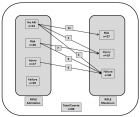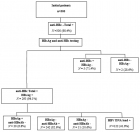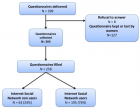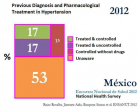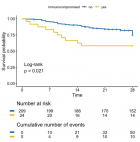Abstract
Research Article
Reaction of Psidium guineense and Psidium guajava genotypes to infection of Meloidogyne enterolobii
Rômulo M de Moraes Filho*, Edilton de Albuquerque Cavalcanti Jr, Jackeline Gadé A Rossiter, Angélica Virginia Valois Montarroyos and Luiza Suely Semen Martins
Published: 08 February, 2018 | Volume 2 - Issue 1 | Pages: 015-019
Psidium guajava (guava) is an important crop and economic resource in many tropical countries and Brazil stands out as one of its major commercial producers. The guava crop has been severely attacked by the plant parasitic nematode Meloidogyne enterolobii which has caused drastic reduction of productivity and, in some cases, even total loss of cultivated areas. The use of resistant rootstocks that are tolerant to these soil pathogens can be a low-cost solution to this pathogen, which has established itself as one of the major constraints for the cultivation of guava in Northeast Brazil. The objective of this work was to evaluate the reaction of P. guajava and P. guineense to M. enterolobii infection under greenhouse conditions, with an infection period of 60 days. 12 P. guineense, and 4 P. guajava were evaluated. The host response to the nematode infection was evaluated according to the following parameters: gill index (GI), reproductive factor (RF), and reduction of reproductive factor (RRF). Considering the RRF criteria, the P. guineense genotypes, AR1, AR3, AR4 and AR10 were considered resistant. The RF index was considered inadequate to evaluate resistance in the 60 days period, due the slow development of the parasite in P.guineense.
Read Full Article HTML DOI: 10.29328/journal.jpsp.1001015 Cite this Article Read Full Article PDF
Keywords:
Root knot nematodes; Guava; Rootstocks
References
- Pereira FM. Nachtigal JC. Melhoramento da goiabeira. In: Cultura da goiabeira: tecnologia e mercado. Rozane, D.E., Couto, F.A.d'A., Eds.; UFV: Viçosa, Brazil. 2003; 53-78.
- Narciso N Rodríguez, Juliette Valdés, Julio A Rodríguez, Josefa B Velásquez, Domingo Rivero, et al. Genetic resources and breeding of guava (Psidium guajava L.) in Cuba. Biotecnol Apl. 2010. Ref.: https://goo.gl/eTf5e2
- São José AR, Rebouças TNH, Dias NO, Hojo RH, et al. Cultivo de Goiabeira no Brasil. In: Primer Simpósio Internacional de La Guayaba. Memoria Aguascalientes, Aguascalientes. 2003.
- Produção Agrícola Municipal. 2014. http://www.sidra.ibge.gov.br.
- Raseira MCB, Raseira A. Contribuição ao Estudo do Araçazeiro: Psidium cattleyanum. Embrapa-CPACT. 1996; 95. Ref.: https://goo.gl/p7VZh2
- Souza RM, Nogueira MS, Lima IM, Melarato M, et al. Manejo de nematoides das galhas da goiabeira em São João da Barra (RJ) e relato de novos hospedeiros. Nematol Bras. 2006; 30: 165-169. Ref.: https://goo.gl/zPRNBQ
- Pereira FM, Kavati R. Contribuição da pesquisa científica brasileira no desenvolvimento de algumas frutíferas de clima subtropical. Rev Bras Frutic. 2011; 108. Ref.: https://goo.gl/wqg8xj
- Maranhão SR. Reação de indivíduos segregantes de goiabeira e araçazeiro a Meloidogyne spp. e caracterização de populações atípicas do nematoide. Dissertação Mestrado, Universidade Federal de Rural de Pernambuco, Recife. 2001.
- Lima IM, Dolinski C, Souza RM. Dispersão de Meloidogyne mayaguensis em goiabais de São João da Barras (RJ) e relato de novos hospedeiros dentre plantas invasoras e cultivadas. Nematologia Brasileira. 2003; 27: 257-258.
- Guimarães LMP, Moura RM, Pedrosa EMR. Parasitismo de Meloidogyne mayaguensis em diferentes espécies botânicas. Nematologia Brasileira. 2003; 27: 139-147. Ref.: https://goo.gl/jS87ev
- Moreira AA, Martins LSS, Musser RS, Moraes Filho RS, MaranhãoW, et al. Response of Malpighia emarginata active germplasm bank accessions to Meloidogyne enterolobii parasitism. Genetics and Molecular Research. 2016; 15: 15048868. Ref.: https://goo.gl/sTBNRt
- Scherer ARG, Carneiro APA, Mônaco MP, Moritz KC, Nakamura JC, et al. Reação de Genótipos de Psidium guajava a Meloidogyne enterolobii. Nematologia Brasileira. 2012; 36: 1-2. Ref.: https://goo.gl/f61PuL
- Martins LSS, Musser RS, Souza AG, Resende LV, Maluf WR. Parasitismo de Meloidogyne enterolobii em espécies de Myrtaceae. Revista Brasileira de Fruticultura. 2013; 35: 477-484. Ref.: https://goo.gl/p9t3ve
- Biazatti MA, Souza RM, Marinho CSI, Guilherme DO, Campos GS, et al. Resistência de genótipos de araçazeiros a Meloidogyne enterolobii. Ciência Rural.2016; 46: 418-420. Ref.: https://goo.gl/TiUMTa
- Sousa ADP, Silva EMR, Castro CUC, Cunha JMC, Ribeiro JM. Penetration, development, and reproduction of Meloidogyne enterolobii on Psidium species and induced cellular responses in the roots. Revista Brasileira de Fruticultura.2017; 39: 453. Ref.: https://goo.gl/jXFPqz
- Hussey, R.S.; Barker, K.R. A comparison of methods of collecting inoculated of Meloidogyne spp., including a new technique. Plant Disease Reporter. 1973; 57: 1025-1028. Ref.: https://goo.gl/4DKR9r
- Taylor AL, Sasser JN. Biology identification and controlo f root-knot nematodes (Meloidogyne species). Raleigh: North Carolina State University Graphics. 1978; 111. Ref.: https://goo.gl/2ejnXA
- Hartman KM, Sasser JN. Identification of Meloidogyne species on the basis of differential host test and perineal-pattern morphology. In: Advanced Treatise on Meloidogyne: Methodology; Barker, K.R, Carter, C.C. & Sasser, J.N. Eds.; Raleigh NC. North Carolina State University, USA. 1985; 2: 69-77. Ref.: https://goo.gl/abRSES
- Oostenbrink M. Major characteristic of the relation between nematodes and plants. Wageningen: Medelingen. Landbowhogeschool. 1966; 46. Ref.: https://goo.gl/RnKgif
- Moura RM, Régis EMO. Reações de cultivares de feijoeiro comum (Phaseolus vulgaris) em relação ao parasitismo de Meloidogyne javanica e M. incognita (Nematoda: Heteroderidae). Nematol Bras. 1987;11: 215-225.
- Silva F de ASE, Azevedo CAV de. The Assistat Software Version 7.7 and its use in the analysis of experimental data. Afr J Agric Res. 2016; 11: 3733-3740. Ref.: https://goo.gl/wErZaE
- Miranda GB, Souza RM, Gomes VM, Ferreira TF, Almeida AM. Avaliação de acessos de Psidium spp. quanto à resistência a Meloidogyne enterolobii. Bragantia, Campinas.2012; 71: 52-58. Ref.: https://goo.gl/kCfKaV
- Costa Filho JH. Coleta e reação de acessos de melancia a Meloidogyne enterolobii. Mestrado em Fitotecnia, Universidade Federal Rural do Semi-Árido, Mossoró (RN). 2012; 27: 238-241. Ref.: https://goo.gl/sL8D8q
- Marques ML, Pimentel SJP, Tavares OCH, Veiga CFM, Berbara RLL. Hospedabilidade de diferentes espécies de plantas a meloidogyne enterolobii no Estado do Rio de Janeiro. Nematropica. 2012; 42: 303-313. Ref.: https://goo.gl/1f2d4H
- Pereira KC, Soares PLM, Santos JM dos, Batista ESP, Maldonato WJ. Desenvolvimento de cultivares de goiabeira inoculadas com Meloidogyne enterolobii. Nematropica. 2016; 46: 54-59. Ref.: https://goo.gl/BPCvs8
- Carneiro RMDG, Cirotto PA, Silva DB, Carneiro RG. Resistance to Meloidogyne mayaguensis in Psidium spp. accessions and their grafting compatibility with P. guajava cv. Paluma. Fitopatologia Brasileira. 2007; 32: 281-284. Ref.: https://goo.gl/5pNBb4
- Castro JMC, Flori JE, Santos CAF, Antunes EF. Evalution of tolerance of Psidium species to the Meloidogyne mayaguensis nematode. In: International Symposium on Guava and other Myrtaceae, Merida, Mexico. 2008; 25. Ref.: https://goo.gl/bdoq2j
Figures:

Figure 1
Similar Articles
-
Reaction of Psidium guineense and Psidium guajava genotypes to infection of Meloidogyne enterolobiiRômulo M de Moraes Filho*,Edilton de Albuquerque Cavalcanti Jr,Jackeline Gadé A Rossiter,Angélica Virginia Valois Montarroyos,Luiza Suely Semen Martins. Reaction of Psidium guineense and Psidium guajava genotypes to infection of Meloidogyne enterolobii. . 2018 doi: 10.29328/journal.jpsp.1001015; 2: 015-019
Recently Viewed
-
Budesonide – Oral Galenic Formulations for Crohn DiseaseLuisetto M, Mashori GR, Cabianca L, Latyshev OYU. Budesonide – Oral Galenic Formulations for Crohn Disease. Ann Clin Gastroenterol Hepatol. 2024: doi: 10.29328/journal.acgh.1001048; 8: 028-033
-
Drug Rehabilitation Centre-based Survey on Drug Dependence in District Shimla Himachal PradeshKanishka Saini,Palak Sharma,Bhawna Sharma*,Atul Kumar Dubey,Muskan Bhatnoo,Prajkta Thakur,Vanshika Chandel,Ritika Sinha. Drug Rehabilitation Centre-based Survey on Drug Dependence in District Shimla Himachal Pradesh. J Addict Ther Res. 2025: doi: 10.29328/journal.jatr.1001032; 9: 001-006
-
A Rare Case of Uvulitis Following Endotracheal Intubation Using C- Mac Videolaryngoscope and How To Avoid ItKiran Kuruvilla George, Jini Chirackel Thomas, Krishnan B Sivaram, Krishna Prasad T*. A Rare Case of Uvulitis Following Endotracheal Intubation Using C- Mac Videolaryngoscope and How To Avoid It. Arch Pathol Clin Res. 2024: doi: 10.29328/journal.apcr.1001043; 8: 016-020
-
Gossypiboma due to a retained surgical sponge following abdominal hysterectomy, complicated by intestinal migration and small bowel obstruction- A Case ReportVivek Agrawal,Praroop Gupta*. Gossypiboma due to a retained surgical sponge following abdominal hysterectomy, complicated by intestinal migration and small bowel obstruction- A Case Report. Arch Surg Clin Res. 2018: doi: 10.29328/journal.ascr.1001017; 2: 015-017
-
Laparoscopic Cholecystectomy: Challenges faced by beginners our perspectiveKunal Chowdhary,Gurinder Kaur,Kapil Sindhu,Muzzafar Zaman*,Aliya Shah,Rohit Dang,Ashish Kumar,Jose John Maiakal,Ashutosh Bawa. Laparoscopic Cholecystectomy: Challenges faced by beginners our perspective. Arch Surg Clin Res. 2018: doi: 10.29328/journal.ascr.1001018; 2: 018-024
Most Viewed
-
Evaluation of Biostimulants Based on Recovered Protein Hydrolysates from Animal By-products as Plant Growth EnhancersH Pérez-Aguilar*, M Lacruz-Asaro, F Arán-Ais. Evaluation of Biostimulants Based on Recovered Protein Hydrolysates from Animal By-products as Plant Growth Enhancers. J Plant Sci Phytopathol. 2023 doi: 10.29328/journal.jpsp.1001104; 7: 042-047
-
Sinonasal Myxoma Extending into the Orbit in a 4-Year Old: A Case PresentationJulian A Purrinos*, Ramzi Younis. Sinonasal Myxoma Extending into the Orbit in a 4-Year Old: A Case Presentation. Arch Case Rep. 2024 doi: 10.29328/journal.acr.1001099; 8: 075-077
-
Feasibility study of magnetic sensing for detecting single-neuron action potentialsDenis Tonini,Kai Wu,Renata Saha,Jian-Ping Wang*. Feasibility study of magnetic sensing for detecting single-neuron action potentials. Ann Biomed Sci Eng. 2022 doi: 10.29328/journal.abse.1001018; 6: 019-029
-
Pediatric Dysgerminoma: Unveiling a Rare Ovarian TumorFaten Limaiem*, Khalil Saffar, Ahmed Halouani. Pediatric Dysgerminoma: Unveiling a Rare Ovarian Tumor. Arch Case Rep. 2024 doi: 10.29328/journal.acr.1001087; 8: 010-013
-
Physical activity can change the physiological and psychological circumstances during COVID-19 pandemic: A narrative reviewKhashayar Maroufi*. Physical activity can change the physiological and psychological circumstances during COVID-19 pandemic: A narrative review. J Sports Med Ther. 2021 doi: 10.29328/journal.jsmt.1001051; 6: 001-007

HSPI: We're glad you're here. Please click "create a new Query" if you are a new visitor to our website and need further information from us.
If you are already a member of our network and need to keep track of any developments regarding a question you have already submitted, click "take me to my Query."







